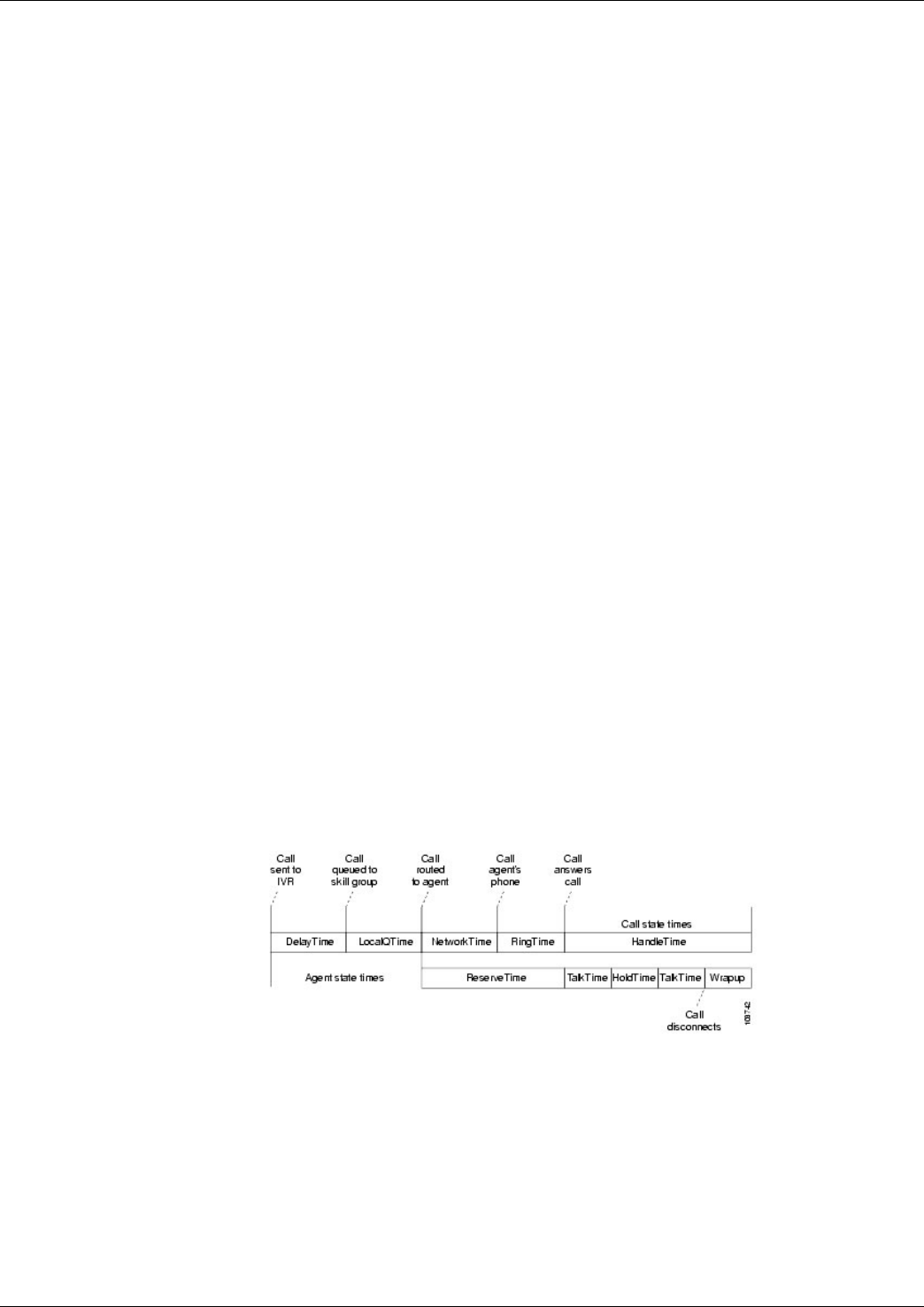User Guide
Table Of Contents
- Cover Page
- Table of Contents
- List of Figures
- Figure 1 : Central Controller
- Figure 2 : Peripheral and Peripheral Gateway
- Figure 3 : Administrative Workstation
- Figure 4 : WebView Server
- Figure 5 : Diagram of System Components
- Figure 6 : ICM Data Environment
- Figure 7 : Real-Time Data Moves to AW Local Database
- Figure 8 : Icons for Graphs and Tables
- Figure 9 : Deployment with Enterprise Routing
- Figure 10 : Sample Script for Enterprise Routing
- Figure 11 : Script Example for Agent Level Routing
- Figure 12 : Sample Script for Hybrid Routing
- Figure 13 : Agent State and Task State Relationship
- Figure 14 : Sample Routing Script for Information Gathering and Queuing
- Figure 15 : Call Type Data for Calls that Abandon after Call Type is Changed
- Figure 16 : Call Type Data for Calls that Abandon before Call Type is Changed
- Figure 17 : MultiChannel Options
- Figure 18 : Agent State Hierarchy
- Figure 19 : Call Abandoned While On Hold Scenario
- Preface
- Chapter 1: System Architecture and Reporting
- Chapter 2: Understanding Reporting
- Chapter 3: Understanding Routing and Queuing
- Chapter 4: Planning for Reporting
- Planning for Reporting at Unified ICM Setup
- Planning for Your Deployment
- Planning for Configuration and Scripting
- Planning for Agent Reporting
- Planning for Call Types
- Planning for Custom Reporting
- Planning for the HDS
- Planning for Enterprise Routing and Enterprise Reporting
- Planning for Service and Enterprise Service Reporting
- Planning for Service Level
- Planning for Short Calls
- Planning for Skill Groups and Enterprise Skill Groups
- Planning for Transfer and Conference Reporting
- Planning for Translation Routing
- Planning for Unexpected Scripting Conditions
- Planning for VRU Application Reporting
- Chapter 5: Reporting on Agents
- What Agent Data do you Want to See?
- Reporting on Agent Activity in Skill Groups
- Reporting on Agent States
- Reporting on Average Speed of Answer for Agents and Skill Groups
- Reporting on Agent Logout Reason Codes
- Reporting on Agent Not Ready Reason Codes
- Reporting on Agent Task Handling
- Reporting on Agent Performance for Outbound Option Dialing Campaign Calls
- Reporting on Agent Redirection on No Answer
- Reporting on Agent Call Transfers and Conferences
- Reporting on Agent Teams
- Chapter 6: Reporting on Customer Experience
- Chapter 7: Reporting on Operations
- Chapter 8: Reporting in a MultiChannel Environment
- Chapter 9: Sample Call Scenario
- Chapter 10: Reporting Implications of Data Loss and Component Failover
- Chapter 11: Troubleshooting Report Data
- Appendix A: List of All Unified ICM Report Templates
- Appendix B: Reporting Entities and Databases
- Appendix C: Configuration and Scripting for Reporting
- Configuration for Agent Reporting
- Configuring Call Types
- Configuration and Scripting for Conferences and Transfers
- Configuring Services and Enterprise Services
- Configuring and Scripting for Service Level Threshold and Type
- Configuring Short Calls
- Configuring Skill Groups and Enterprise Skill Groups
- Configuration and Scripting for the VRU
- Configuring Translation Routes
- Index

For non-voice tasks, the default skill group is also used when the Queue to Agent node is used
to queue a task to an agent if the agent is not logged into the skill group specified in the Queue
to Agent node.
Using a default skill group helps to:
•
Ensure the agent/skill group reports balance with the service and call type reports, since
service and call type reports include only ICM-routed calls
•
Isolate/identify non-ICM-routed calls within the agent and skill group report
You do not have to create a default skill group--it is automatically created when you establish
MRD/Peripheral Gateways pairs. The default skill group has a peripheral number of 0.
Statistics for the default skill group are affected by different types of calls, including new calls,
agent-to-agent-dialing, and transferred and conferenced calls.
If you deploy Multichannel options in an ICM Enterprise system, default skill groups are created
for each Media Routing Domain that is configured. Refer to Reporting in a MultiChannel
Environment (page 127) section for more information about Multichannel options.
Agent State and Task State Relationship
Agent state times are reported on half-hour boundaries regardless of whether or not the call or
task is finished. Call and task state times are reported only when the task ends. The call/task
ends when wrap up is complete.
The following figure illustrates the correlation between agent state and call state for a voice
call. The agent reserve time includes the time it took the call to arrive at the agent’s phone or
desktop (network time) as well as the amount of time that the call rang on the agent’s phone or
waited on the agent’s desktop (offer/ring time).
Figure 13: Agent State and Task State Relationship
If the half-hour boundary ends when the call is ringing on the agent’s phone, the reserved time
for the agent includes the network time and part of the ring time. At the next half-hour interval,
the remaining ring time is reported in the reserved time of the agent. However, the call’s time
does not appear on a report until wrap up has been completed on the call.
Reporting Guide for Cisco Unified ICM Enterprise & Hosted Release 7.2(1)
83
Chapter 5: Reporting on Agents
Reporting on Agent States










